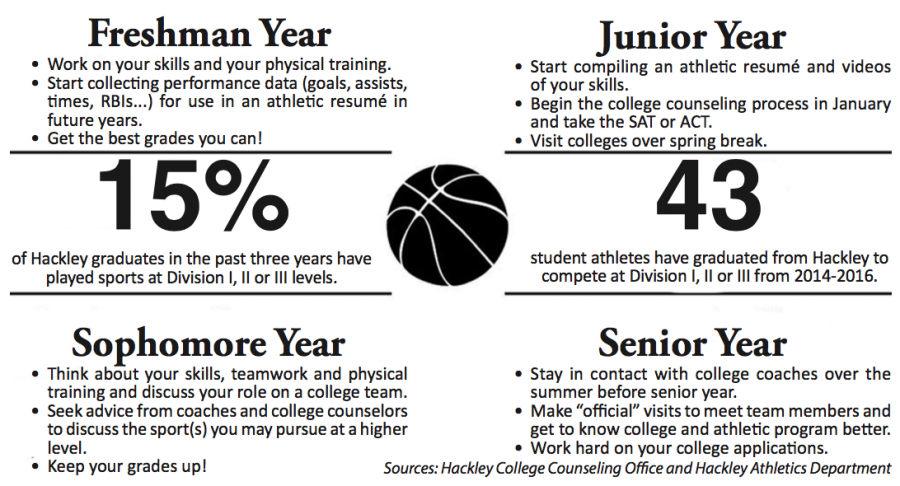Navigating the college recruiting process
Credit: Benjy Renton
February 10, 2017
“Committed.” The word that every athlete aspiring to play sports in college hopes they can proudly claim to be. Many people search for a universal “road map” to the recruitment process, and feel that they need to follow particular steps in order to get committed. However, what these people do not know is that there isn’t one particular “way” to do it; there really is no definitive “structure” to the recruiting process, and the nature of recruiting can vary among different sports, preferences of the person, and between boys and girls.
A concrete timeline to the recruitment process does not exist. Some student athletes begin preparing to play in college as early as 8th grade, whereas others begin later in high school. “I’d say I was thinking about trying to catch coaches eyes at tournaments in probably freshman year and then I got more concerned about thinking about specific schools towards the end of sophomore year and the beginning of junior year,” said senior Wyatt Khosrowshahi. Particularly, women’s lacrosse programs can begin committing student athletes at the beginning of their freshman year in high school. Senior Meghan Cunningham had two teammates on her club lacrosse team who committed around “January of their freshman year. One to Virginia Tech and the other to Vanderbilt,” she noted.
The most complex component to committing to a school is finding one that suits the recruit academically, athletically, and socially and prioritizing what they hope to get from their college experience. Senior Teddy van Eck, who will be playing tennis at Brown University next year, felt that the most important thing in his search was the academic and social fit of the school, and not the level of the sport he was playing. “Ultimately it didn’t come down to DIII vs. DI for me, but it came down to the academics of the school and if I felt I would fit in there and if I liked the team,” he said. “The people at Brown really drew me more than academics, because while they were definitely a factor, at the end of the day you’re not going to a school and focusing on academics 24/7; you want to have a good time.” As student athletes near the end of their recruitment process, it is common for student athletes to take official or overnight visits to experience a day in the life at a particular school and get to know the students there.
Like Teddy, senior Winston Britton prioritized academics in his search for a college, however, he also valued the division level of the football program for that school. He will be playing football at the University of Pennsylvania next year. “It’s always been a lifelong dream of mine to play at the Division I level, and that really ran through my mind while I was looking at schools. I didn’t want to go to the Division III level unless I absolutely had to and had no offers from the Division I level,” he said.
While many sports have multiple levels of play, squash is an exception. This difference definitely shifts the elements to a student’s search; without various divisions there leaves more room for investigating the school apart from the division of the team. “For squash, it doesn’t really matter whether it is a DI or DIII school, because the best team in the country is Trinity which is technically Division III in other sports, so schools with either Division I/III didn’t really affect where I was looking,” said senior Wyatt Khosrowshahi.
Many students also take the social aspect of teams into account as they approach their decision to play sports in college. Senior Tucker van Eck, who will be playing squash at Williams College, definitely looked into how athletics would play a role in his college experience socially before he made a decision. “At schools like Williams, or NESCACs or any other small schools, roughly 60-70% of the school population is on a sports team, so when you’re not in that 30%, it can be kind of harder to start off unless you’re in a music program,” he said. “When I started looking at schools and the prospect of going to a school in the midwest or a school in California, I realized that I would have to join a lot of clubs and there wouldn’t be many things that would make me distinct…I also felt like I would have to join a frat or something similar, because in big schools it can be hard to find a friend group.”

